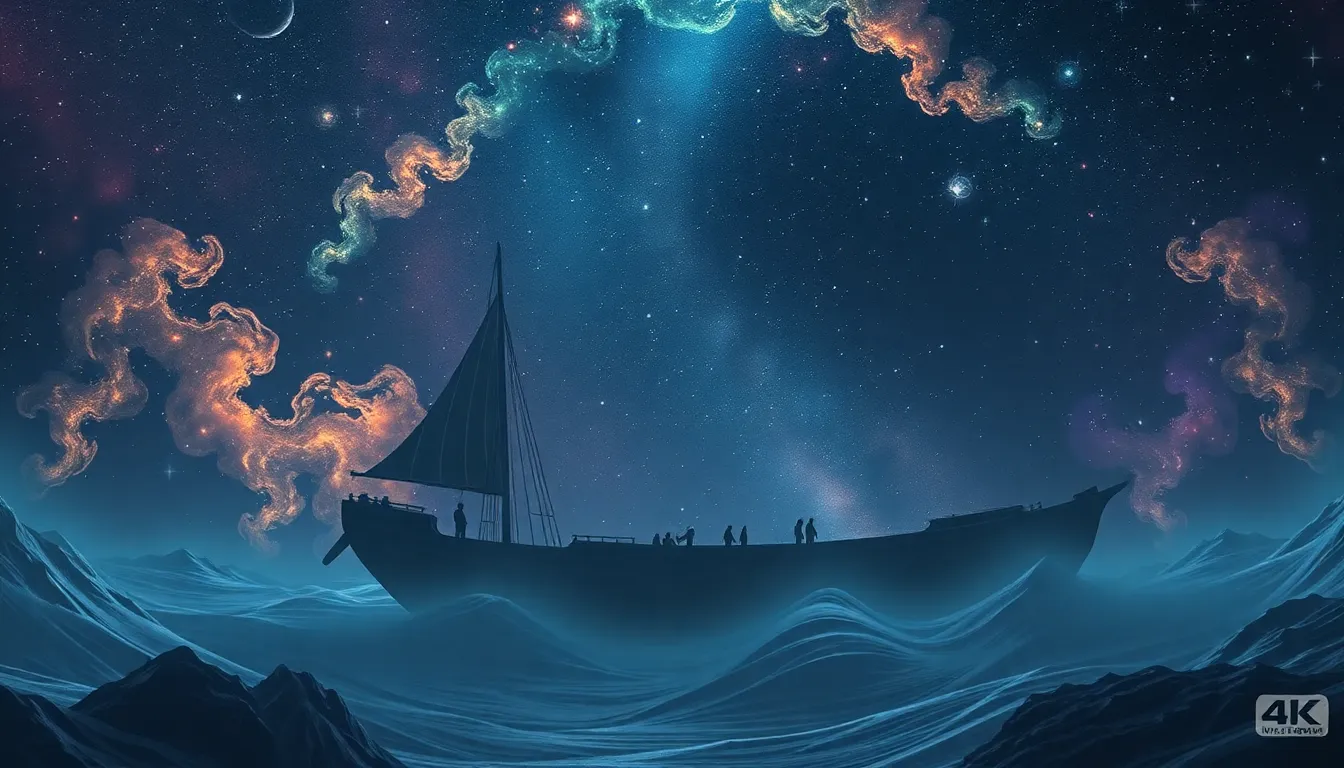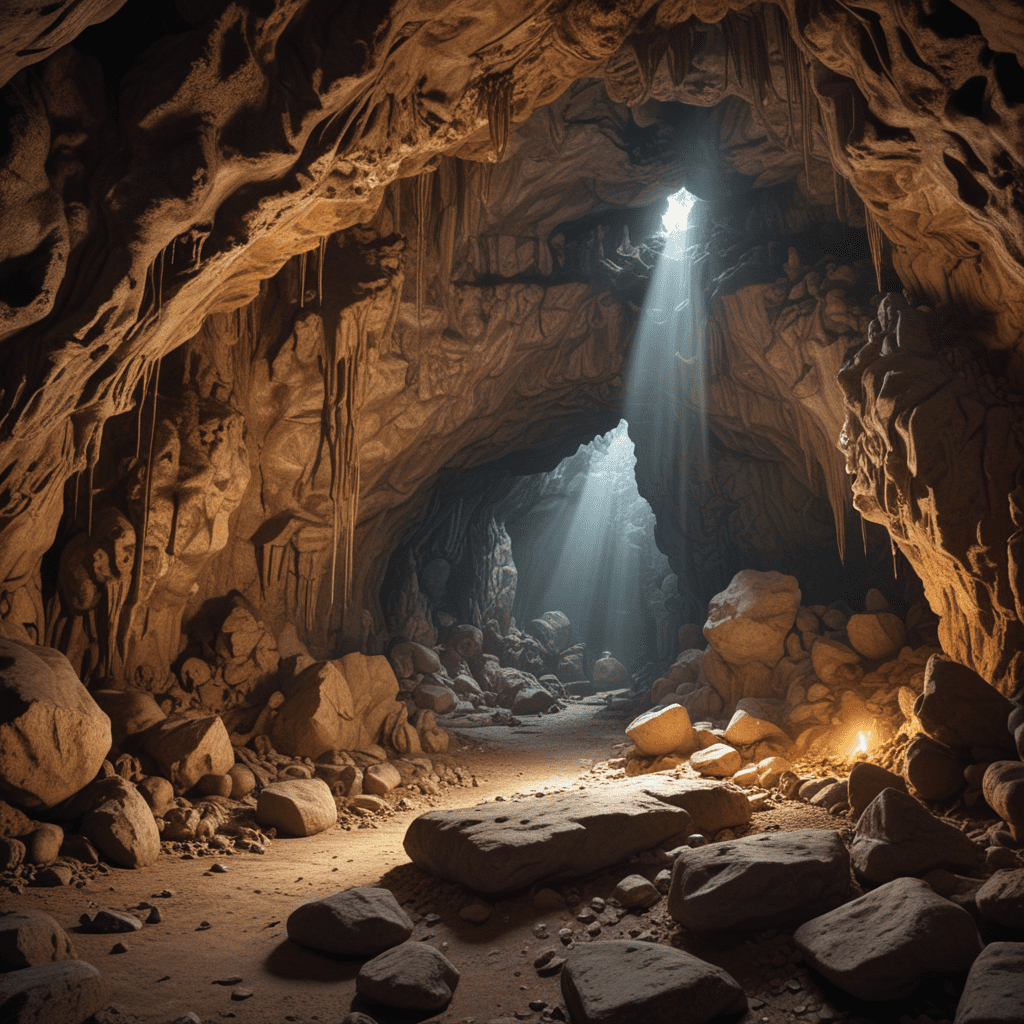The Myth of the Celestial Voyage: Adventures Among the Stars
Introduction: The Allure of the Stars
Since the dawn of humanity, the stars have captured our imagination and curiosity. The twinkling celestial bodies have not only guided explorers but have also inspired countless myths, legends, and literary works. The concept of celestial voyages, whether through the lens of mythology or fiction, has sparked a yearning to explore the unknown realms beyond our planet.
Historical Perspectives on Celestial Voyages
Throughout history, various civilizations have gazed up at the night sky, interpreting the stars in ways that reflected their cultures, beliefs, and understanding of the universe. Ancient civilizations such as the Egyptians, Greeks, and Native Americans created rich narratives surrounding the stars, often portraying them as gods, heroes, or storytellers.
- Greek Mythology: The Greeks imagined constellations as figures from their myths, such as Orion the hunter or Cassiopeia the queen, whose tales often involved journeys and adventures among the stars.
- Native American Folklore: Many Native American tribes have their own celestial stories, such as the Navajo’s creation myths which include the stars as part of their spiritual beliefs and storytelling traditions.
The Rise of Astronautical Fiction
As humanity’s understanding of the universe expanded, so did our imaginations. The genre of science fiction emerged in the 19th century, providing a platform for exploring the possibilities of space travel. Writers began to envision expeditions beyond Earth, influencing public perception and scientific aspirations.
Key authors and works that shaped this genre include:
- Jules Verne: Often hailed as the father of science fiction, his novel “From the Earth to the Moon” (1865) depicted a journey to the moon, blending scientific plausibility with adventurous storytelling.
- H.G. Wells: In works like “The War of the Worlds” (1898) and “The First Men in the Moon” (1901), Wells explored themes of extraterrestrial life and the implications of space travel, challenging readers to consider humanity’s place in the universe.
The Science Behind Space Travel: Reality vs. Myth
Today, our understanding of space travel is grounded in science. Unlike the fantastical journeys depicted in myths and literature, real space travel involves complex technology and rigorous training. Astronauts face numerous challenges, including:
- Microgravity effects on the human body
- Radiation exposure in space
- Psychological challenges of long-duration missions
Technological advancements, such as reusable rockets and advanced life support systems, have brought celestial voyages closer to reality. The success of missions like Apollo 11 and the International Space Station (ISS) has proven that with determination and innovation, humanity can reach beyond our earthly confines.
Cultural Representations of Space Travel
The allure of space travel has permeated various forms of culture. From art to film and music, different cultures depict celestial voyages in unique ways. For instance:
- Art: Artists have long been inspired by the cosmos, creating works that reflect the beauty and mystery of the night sky.
- Film: Movies like “2001: A Space Odyssey” and “Interstellar” explore deep philosophical questions through the lens of space exploration, engaging audiences with both visual spectacle and emotional depth.
- Music: Composers and musicians have drawn inspiration from the stars, embedding themes of exploration and wonder into their works.
The Psychological Impact of Celestial Voyages
The vastness of space has a profound effect on the human psyche. The exploration of space raises existential questions about our place in the universe, our origins, and the future of humanity. The significance of space exploration can be seen in:
- Fostering a sense of unity and shared purpose among people worldwide.
- Encouraging scientific inquiry and discovery, pushing the boundaries of human knowledge.
- Inspiring future generations to dream big and pursue careers in science, technology, engineering, and mathematics (STEM).
The Role of Space Agencies and Private Enterprises
Space exploration has historically been the domain of government entities, but the landscape is changing. Major space agencies like NASA, ESA, and Roscosmos have led groundbreaking missions, while private companies are now playing a significant role in advancing space travel.
Some notable contributions include:
- NASA: Continuing missions to the Moon, Mars exploration, and the Artemis program aiming for sustainable human presence on the Moon.
- SpaceX: Revolutionizing space travel with reusable rockets and ambitious plans for Mars colonization.
- Blue Origin: Pioneering suborbital space tourism and advocating for human settlement in space.
The Future of Celestial Voyages: What Lies Ahead?
The future of space exploration is filled with possibilities. Upcoming missions, such as NASA’s Artemis program aimed at returning humans to the Moon, and missions to Mars by various space agencies, are paving the way for potential human settlement on other planets.
Moreover, scientists are beginning to explore the concept of interstellar travel, with theoretical discussions around:
- The use of warp drives and wormholes to traverse vast distances.
- Exploring exoplanets that may harbor life.
- Long-term survival strategies for humanity beyond Earth.
Debunking the Myths: What We Know vs. What We Wish Were True
Despite the romanticism surrounding celestial voyages, various myths and misconceptions persist. It is crucial to distinguish between science and fiction by debunking common myths, such as:
- The belief that faster-than-light travel is possible with current technology.
- The assumption that extraterrestrial life is abundant and easily accessible.
- Misunderstandings regarding space tourism and its feasibility for the average person.
Critical thinking plays a vital role in evaluating claims about celestial voyages, ensuring that we remain grounded in reality while still dreaming of the stars.
Conclusion: The Continuing Journey Beyond the Stars
Humanity’s quest for knowledge and exploration is a testament to our enduring spirit. The myth of the celestial voyage, whether through ancient stories or modern science fiction, inspires us to look beyond our earthly existence and seek out the mysteries of the universe. As we continue to dream about and pursue celestial voyages, we ignite the imaginations of future generations, ensuring that our journey beyond the stars is far from over.




